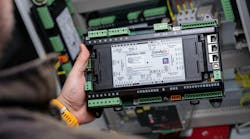Investors Pump $1 Billion into AI Chip Startups Samba Nova, Groq
Investors are pouring money into artificial intelligence (AI) startups at an unprecedented rate. Last week, two AI hardware startups received nearly $1 billion in venture capital funds to bring additional chips to market.
First Samba Nova announced a $676 million Series D round led by SoftBank, with the venture arms of Intel, Google and Blackrock participating. A day later, Groq unveiled $300 million in Series C funding, led by Tiger Global Management and D1 Capital.
The investments highlight the growing appetite for new chip technologies that can bring new capabilities to applications and services. Both enterprise IT and cloud players are seeking to create more intelligent platforms, and specialized AI chips are part of the arms race to supply this need. That was reflected in recent announcements from Intel and NVIDIA featuring more powerful chips.
The current AI revolution has been unleashed by increased computing power, especially the development of GPUs and custom ASICs and FPGAs that focus more horsepower on specific AI capabilities.
“AI is limited by existing systems, many of which are being followed or incrementally improved upon by new entrants,” said Jonathan Ross, Groq Founder and CEO. “No matter how much money you throw at the problem, legacy architectures like GPUs and CPUs struggle to keep up with the growing demands of artificial intelligence and machine learning. Our mission is more disruptive: Groq seeks to unleash the potential of AI by driving the cost of compute to zero.”
“Traditional CPU and GPU architectures have reached their computational limits,” said Rodrigo Liang, SambaNova co-founder and CEO. “To truly unleash AI’s potential to solve humanity’s greatest technology challenges, a new approach is needed. “We’re here to revolutionize the AI market, and this round greatly accelerates that mission. We’ve figured out that approach, and it’s exciting to see a wealth of prudent investors validate that.”
More Power for New Computing Challenges
In artificial intelligence (AI), computers are assembled into neural networks that emulate the learning process of the human brain to solve new challenges. It’s a process that requires lots of computing horsepower, which is why the leading players in the field have moved beyond traditional CPU-driven servers. The race to leverage AI is led by the industry’s marquee names – including Google, Facebook, Amazon and Microsoft – who are seeking to add intelligence to a wide range of services and applications.
SambaNova’s Series D round brings its total funding to more than $1 billion and rockets its valuation to more than $5 billion. The company’s approach to “software-defined hardware” features DataScale, an integrated software and hardware systems platform with optimized algorithms and next-generation processors, which SambaNova says can work across applications for training, inference, data analytics, and high-performance computing.
SambaNova’s early clients include several U.S. Department of Energy labs, and it’s flagship offering is Dataflow-as-a-Service, a subscription-based AI services platform the company says will “accelerate the work of existing data centers, allowing the organization to focus on its business objectives instead of infrastructure.”
Groq was founded by former Google engineers and is developing a tensor processing unit (TPU), the same class of chip running Google’s AI workloads. The company has now raised $367 million, and plans to use the funding to hire top talent and speed development of its products. Groq also touts “software-defined compute” and says it has the fastest single core chip.
The company’s investors are big on Groq’s ability do bring better energy efficiency to AI computing.
“We are more than doubling-down on our investment in Groq,” said Nicolas Sauvage, Managing Director, TDK Ventures. “Their elegant AI chipset architecture is impressive and will have a powerful impact for our planet. Scaling traditional compute consumes enormous energy. Groq’s solution delivers order-of-magnitude more efficient compute-per-energy performance at scale, thereby improving the carbon footprint of hyperscale data centers, an ideal about which TDK Ventures is very passionate.”
The arrival of startup silicon on the AI computing market follows several years of intense competition between chip market leader Intel Corp. and rivals including NVIDIA, AMD and several players advancing ARM technology. Intel continues to hold a dominant position in the enterprise computing space, but the development of powerful new hardware optimized for specific workloads has been a major trend in the high performance computing (HPC) sector, boosted by demand for data-crunching for artificial intelligence and other types of specialized workloads.
About the Author



